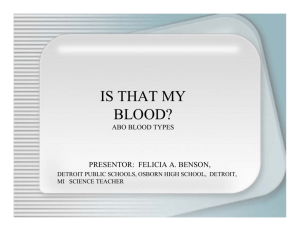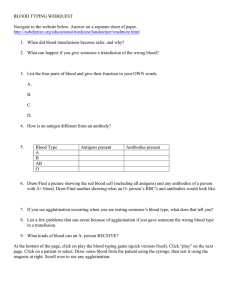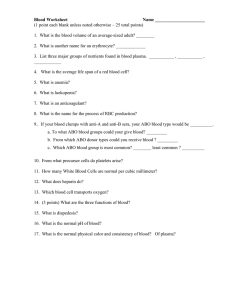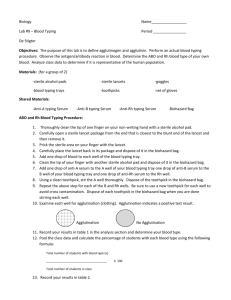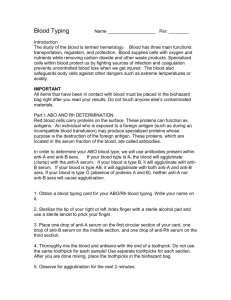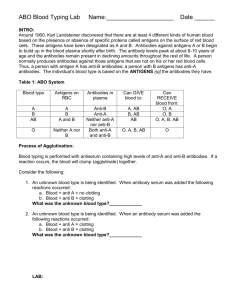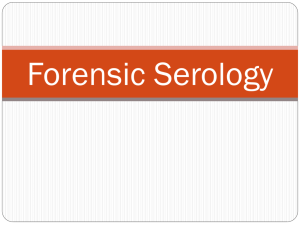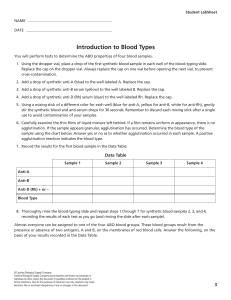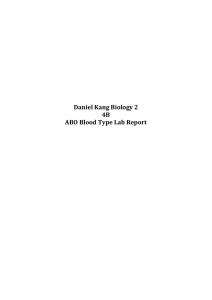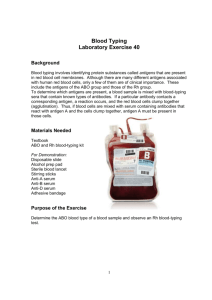Blood Typing Activity
advertisement
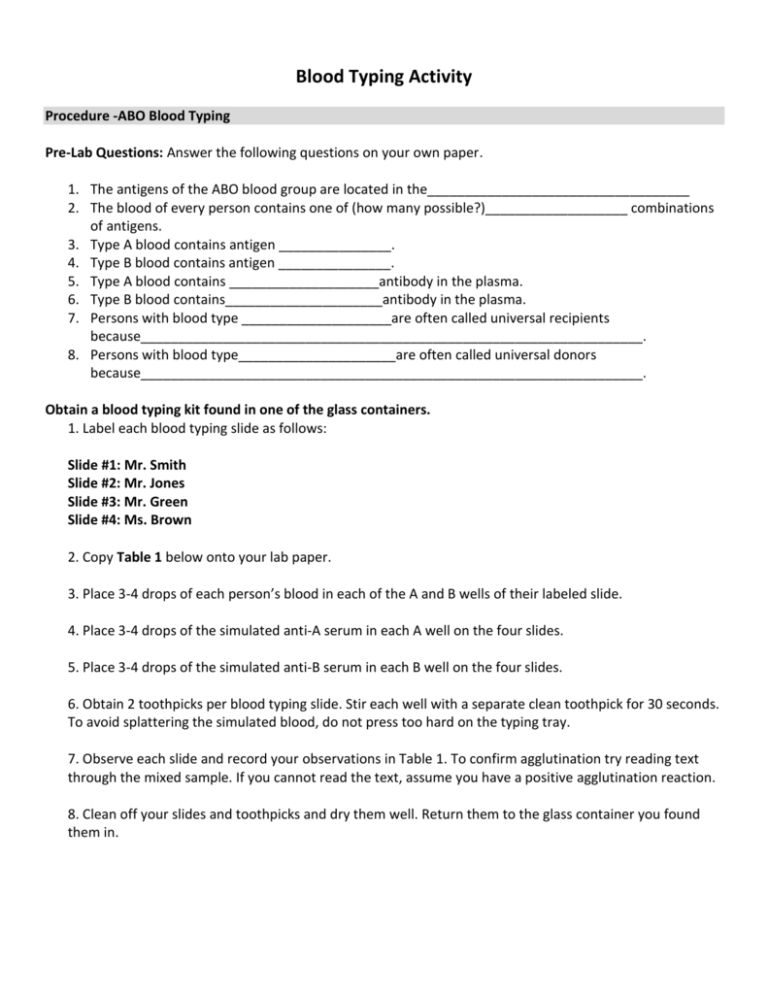
Blood Typing Activity Procedure -ABO Blood Typing Pre-Lab Questions: Answer the following questions on your own paper. 1. The antigens of the ABO blood group are located in the___________________________________ 2. The blood of every person contains one of (how many possible?)___________________ combinations of antigens. 3. Type A blood contains antigen _______________. 4. Type B blood contains antigen _______________. 5. Type A blood contains ____________________antibody in the plasma. 6. Type B blood contains_____________________antibody in the plasma. 7. Persons with blood type ____________________are often called universal recipients because___________________________________________________________________. 8. Persons with blood type_____________________are often called universal donors because___________________________________________________________________. Obtain a blood typing kit found in one of the glass containers. 1. Label each blood typing slide as follows: Slide #1: Mr. Smith Slide #2: Mr. Jones Slide #3: Mr. Green Slide #4: Ms. Brown 2. Copy Table 1 below onto your lab paper. 3. Place 3-4 drops of each person’s blood in each of the A and B wells of their labeled slide. 4. Place 3-4 drops of the simulated anti-A serum in each A well on the four slides. 5. Place 3-4 drops of the simulated anti-B serum in each B well on the four slides. 6. Obtain 2 toothpicks per blood typing slide. Stir each well with a separate clean toothpick for 30 seconds. To avoid splattering the simulated blood, do not press too hard on the typing tray. 7. Observe each slide and record your observations in Table 1. To confirm agglutination try reading text through the mixed sample. If you cannot read the text, assume you have a positive agglutination reaction. 8. Clean off your slides and toothpicks and dry them well. Return them to the glass container you found them in. Table 1 Anti-A Serum Anti-B Serum Blood Type Observations Slide #1 Mr. Smith Slide #2 Mr. Jones Slide #3 Mr. Green Slide #4 Ms. Brown Complete the following in complete sentences: 1. What ABO antigens are present on the red blood cells of Mr. Green’s blood 2. What ABO antibodies are present in the plasma of Mr. Green’s blood? 3. If Mr. Jones needed a transfusion, what ABO blood type(s) of blood could he safely receive? 4. If Ms. Brown were serving as a donor, what ABO blood types (s) could receive her blood safely? 5. Why is it necessary to match the donor’s and the recipient’s blood before a transfusion is given? 6. What happens to red blood cells that are agglutinated? 7. What is the difference between antigen and antibody? 8. Explain the basis of ABO blood types. 9. Could a man with an AB blood type be the father of an O child? Explain. 10. Could a man with an O blood type be the father of an AB child? Explain. 11. Could a Type B child with a Type A mother have a Type A father? Explain. 12. What are the possible genetic combinations of an offspring if blood types of the parents are A and B? 13. Identify an area in your own life in which knowing about blood or its components has been or will be important. 14. Write a conclusion about blood cells and blood typing based on your lab findings.
